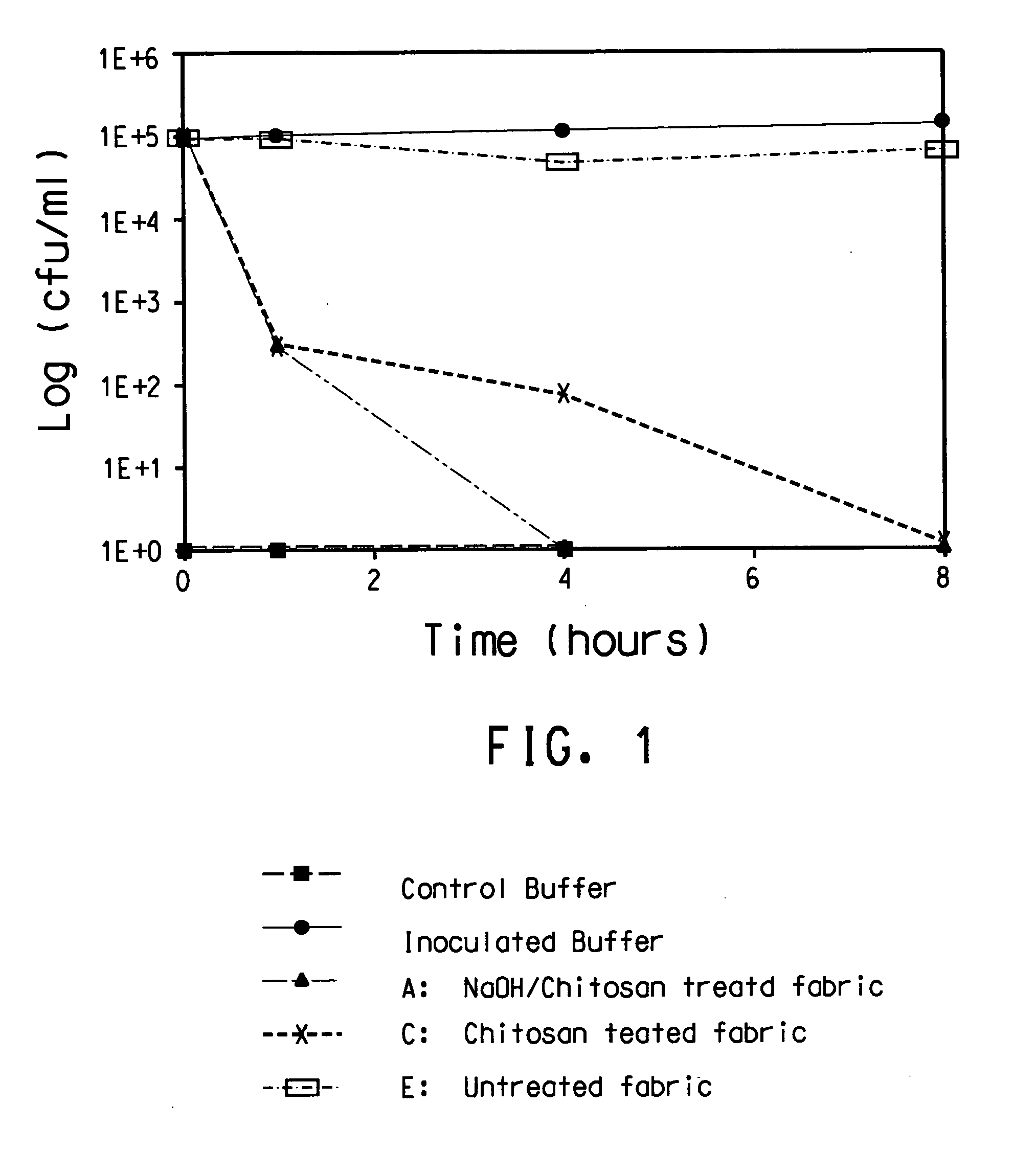Antimicrobial ballistic fabrics and protective articles
- Summary
- Abstract
- Description
- Claims
- Application Information
AI Technical Summary
Benefits of technology
Problems solved by technology
Method used
Image
Examples
example 1
[0066] Material: A sample of Kevlar® / Nomex® aramid batt thermal liner of the type used in the protective gear of a typical firefighter uniform was obtained from E. I. du Pont de Nemours & Co., Inc. (Wilmington, Del.). The batt consisted of 75% Kevlar® and 25% Nomex® fibers. The batt was stitched to a face cloth consisting of Nomex®. Pieces (4″×4″) were cut from the large piece and used in the following experiments.
[0067] Chitosan Deposition of Sodium Hydroxide treated Kevlar® / Nomex®: Two pieces of the above fabric (A=2.43 g, B=2.51 g) were soaked in water for 30 min. The excess water was drained by suction, and the fabric pieces were then soaked in 10% aqueous sodium hydroxide solution for 30 min. The pieces were then taken out and excess sodium hydroxide solution was removed by suction under vacuum. The pieces were then soaked in 2% chitosan (ChitoClear® TM656, obtained from Primex, Norway, molecular weight about 70,000, degree of deacetylation over 90%) solution in 0.75% aqueous ...
example 2
[0070] Ten 4 inch by 4 inch (10 cm by 10 cm) pieces of the Kevlar® / Nomex® aramid batt thermal liner material described in Example 1 were cut, placed in a container with 1500 ml water and rolled on a tumbler for 30 minutes. The pieces were removed and excess water was drained by suction while squeezing. The pieces were then placed in a second container with 1500 ml 10% NaOH aqueous solution and rolled on a tumbler for 30 minutes. The pieces were removed and excess liquid was drained by suction while squeezing. The pieces were washed once with water to remove excess NaOH. The pieces were then put in a third container with 1500 ml of a 2% chitosan (ChitoClear® TM656, obtained from Primex, Norway, molecular weight about 70,000, degree of deacetylation over 90%) solution in 0.75% aqueous acetic acid and rolled on a tumbler for 30 minutes. The pieces were removed and excess liquid was drained by suction while squeezing. The pieces were hung in ambient air overnight to dry. The pieces were...
PUM
| Property | Measurement | Unit |
|---|---|---|
| Temperature | aaaaa | aaaaa |
| Temperature | aaaaa | aaaaa |
| Fraction | aaaaa | aaaaa |
Abstract
Description
Claims
Application Information
 Login to View More
Login to View More - R&D
- Intellectual Property
- Life Sciences
- Materials
- Tech Scout
- Unparalleled Data Quality
- Higher Quality Content
- 60% Fewer Hallucinations
Browse by: Latest US Patents, China's latest patents, Technical Efficacy Thesaurus, Application Domain, Technology Topic, Popular Technical Reports.
© 2025 PatSnap. All rights reserved.Legal|Privacy policy|Modern Slavery Act Transparency Statement|Sitemap|About US| Contact US: help@patsnap.com

